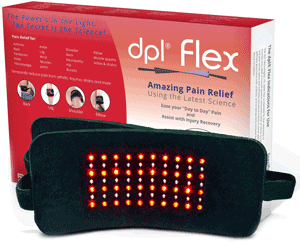One of the summer’s simple pleasures is sunbathing. Who doesn’t love lounging on a beach blanket with a good book? And who doesn’t love the deep, golden bronze look of sun-kissed skin? However, there is such a thing as best time for tanning and disregarding it can be very costly- for your health and appearance both.
We all want the look, and we love our time in the sun, but it’s important to be smart about it. Choosing the best time of day to tan outside, paying attention to UV index and using products to protect your skin will prevent long-term epidermis damage and give you the stunning look you’ve been dreaming about.
Let’s start with the basics. When is the best time to tan outside? Should you be tanning in the morning or tanning in the evening? Continue reading to clear up all the doubts you might have and learn everything there is to know about the best time for tanning.
Table of Contents
Making the Most of the Sun Without Suffering the Consequences
It’s not just a sunburn that you need to worry about. If you want a great tan, but you’re not responsible about how you get it, there is melanoma or skin cancer to be concerned with, as well. Of course, not all basking in the warm sunny days leads to skin damage and serious illness. Scientists and doctors agree that there is such a thing as the best time of day to tan, and they say it can drastically minimize the risks. The American Cancer Society recommends tanning in the morning. Ideally, it would be before the sun’s peak hours begin at 10 AM, or if you prefer tanning in the evening after they end at 4 PM.
Same as there is the best time to tan outside, there is the worst time to be sunbathing outdoors. The period of the day between 10 AM and 4 PM is when the UV index is the highest, and it’s best to avoid tanning at this time. Especially if you have fair skin sensitive to the sun! Additionally, you should also avoid this if you’ve just started on your tan and haven’t yet established a solid base. For people in these two categories, tanning during peak hours will result in a painful sunburn. In fact, some people will begin to burn in under five minutes during this time of day!
You might be tanning in the morning or tanning in the evening won’t lead to a radiant, bronze skin, but that’s just a myth. In reality, this is the best time of day to tan and it gives you great results with minimal risks. Sure, it does take a little bit longer, but it’s better to have patience with the process than to end up burned to a crisp. Or, even worse, with a life-threatening condition.
In case you want to speed things up a bit but still stay on the safe side, try tanning between 9 and 10 AM or between 4 and 5 PM. You’ll miss the highest intensity, but the sun will still be strong enough to ensure that you’ll end up with color. For people who are not too fair or simply want fast results, this is the best time for tanning.
It goes without saying that you should always make sure to wear sun protection or tanning lotions to keep your skin safe. Remember, you can still get a sunburn if you spend too much time in the sun, even if it’s during the best time to tan outside. It’s always best to go slowly, so make your first few sessions between five and ten minutes long, depending upon your skin tone. You can incrementally increase your time in the sun by just a few minutes each session.
Tanning During Peak Hours: Can It Be Safe?
As stated above, tanning during peak hours is not recommended. Best time to tan outside is early in the morning or in the afternoon, before the sun sets. However, if you happen to be in the sun during the high UV index hours, there are precautions you should take to minimize your risk.
Do not, under any circumstance, use lotions or oils containing tan accelerators during this time. While tanning lotions are great aid in getting that radiant darker skin tone, it is in your best interest to use SPF protection instead during peak hours. Products with a low SPF won’t stop you from getting a tan, but they will make sure that the UV damage to your skin is minimal.
If you’re in the sun during peak hours, be mindful of the time. It’s always important to monitor how long you’re sunbathing, but it’s critical during this time of the day. Even a couple of minutes could mean the difference between tanning and burning!
Try to keep your exposure during peak hours to a minimum. Not only that this is not the best time of day to tan, but repeated exposure to high UV index is what causes most skin cancers. Most skin cancers are the result of repeated exposure, especially repeated burns, over a long period of time.
Best Time for Tanning- Don’t Fall Victim to Sun Tanning Myths
Unfortunately, there are a lot of myths about sun tanning that get passed around like they are scientific fact. One of the most common misconceptions people have is they won’t get a sunburn if the sky is overcast. Unfortunately, UVA and UVB rays can cut through clouds like a hot knife through butter, causing the same type of damage they would on a cloudless day. Not surprisingly, most cases of sunburn in overcast weather occur at peak hours.
Another frequent myth is that you need to over-expose yourself to sun to get a deep bronze tan. As a shortcut, a lot of people then opt to skip out on sunbathing when it’s the best time for tanning and go straight for the peak hours. The combination almost always leads to a sunburn and nasty peeling skin and never to that gorgeous tan you want.
Even if you already have a tan worthy of a Greek goddess, it won’t keep you safe from burning if you go overboard with exposure. It’s a common mistake to think that you can’t get skin damage if you are tanned. Sure, it will take longer for you to get a burn, but, rest assured, you will get one. No need to find that out the hard way!
When Is the Best Time to Tan for Fast Results?
Listen to your body’s signals and follow the guidelines set by doctors and scientists. It’s simple as that! You’ll quickly figure out when and for how long you should sunbathe for your skin to get that caramel hue. For most, the best time of day to tan is during off-peak hours, but it’s a slower process.
To speed things up but still stay safe, you can combine outdoor sunbathing with tan-promoting products such as lotions, sprays or pills. This will increase the level of melatonin in your system, allowing you to soak up those sun rays much more efficiently and quickly. With a smart strategy such as this one, you’ll be looking radiant and tanned in no time!



I am fair skin and I found the best time to expose myself to the sun is 7am until 7:20 am in order to release Vit D inside my body.
Without sunblock or sunscreen because its very early in the morning , the uv index is at its lowest if the sun shine without clouds.
To obtain a tan with minimum risk exposure to dangerous UV rays the tanning is done at 9:00 until 9:20 am . The front of my body is exposed for 4min and my back is exposed for 4min . Both the right and left side of my body is exposed for 4 min to the sun. Uv sunscreen with a rating of 30 is used between 9:00 am until 9:20 am.
There after I took a bath , not to hot just the right temp , and a skin care moisturiser is applied to keep the skin hyrdated.
Is this a healthy habit in sunny
South Africa ?
I feel very healthy .
Just asking ?
Respectfully yours.
I have read once on an webside that exposure to the sun could benefit men by releasing nitrox oxide into the blood stream.
If the body release nitrox oxide during sun exposure early in the morning then a man could benefit from the nitrox oxide during exercise . I think it is a good idea to exercise early in the morning between 7 am until 9 am . On another webpage I have read that sun exposure could increase testorone levels in a man body. If this information held any truth , then a man could benefit from early morning sun exposure.
It sounds like a good idea to recharge the male body with solar energy early in the morning.
I guise a man could also use a tanning lotion or tanning pills to obtain a tan early in the morning , with minimum risk of developing cancer.
The sun uv rays are at minimum level during 7 am until 9 am .
Is there any proof that testorone and nitrox oxide levels increase during sun exposure early in the morning between 7 am until 9 am ..?
Is it save to use tanning lotion witout uv block early in the morning between 7 am until 9 am ?
Some tanning pills contain harmfull ingredients , and should be use carefully or totally avoid.
Any proffestional oppinion about this idea ?
Respectfully yours.
That second to last sentence “This will increase the level of melatonin in your system”, doesn’t that have to do with sleep? do you mean melanin?